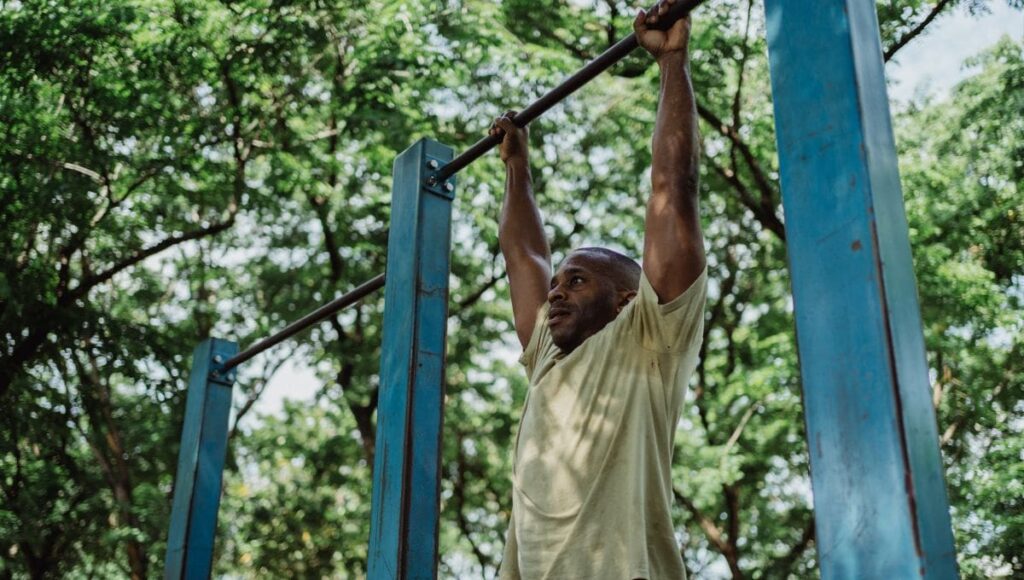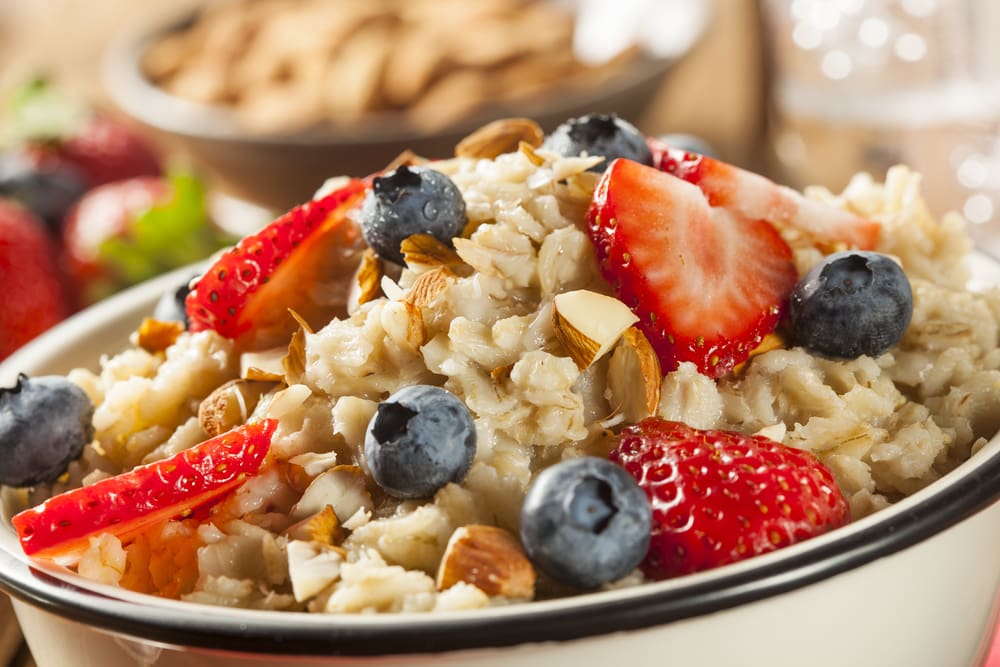A defined six-pack isn’t just about aesthetics; it’s also a testament to core strength, stability, and endurance. Advanced core exercises take abdominal training to the next level by challenging muscle coordination, balance, and resistance.
This article outlines five of the best advanced core exercises, providing evidence-based insights to help you build a stronger, more defined midsection.
Understanding the Core’s Role
Before diving into the exercises, it’s crucial to understand the anatomy and function of the core. The core comprises the rectus abdominis (six-pack muscles), transverse abdominis (deep stabilisers), internal and external obliques, and erector spinae (spinal support).
According to a review by Behm et al. (2010), the core is pivotal for generating power, maintaining balance, and preventing injuries, particularly during heavy lifting or athletic movements.
Advanced Core Exercises
1. Hanging Leg Raises with Twist

This dynamic movement targets the rectus abdominis, obliques, and hip flexors. Adding a twist increases rotational engagement, essential for sports performance and injury prevention.
Execution:
- Hang from a pull-up bar with a firm grip.
- Keep your legs straight, lift them towards your chest, and twist your hips at the top of the movement.
- Lower your legs in a controlled manner. Alternate twisting sides on each repetition.
Benefits:
A study by Escamilla et al. (2006) demonstrated that hanging leg raises recruit the lower rectus abdominis and external obliques more effectively than traditional crunches.
Sets and Reps: 3–4 sets of 12–15 reps per side.
2. Ab Rollouts with a Stability Ball
This exercise engages the rectus abdominis and transverse abdominis through a significant range of motion, enhancing core stability and anti-extension strength.
Execution:
- Kneel on the floor with a stability ball in front of you.
- Place your hands on the ball and roll it forward while keeping your core braced and spine neutral.
- Roll out as far as your core strength allows, then pull back to the starting position.
Benefits:
Research by Vera-Garcia et al. (2000) revealed that ab rollouts with a stability ball activate deep core stabilisers more effectively than floor-based exercises.
Sets and Reps: 3 sets of 10–12 reps.
3. Weighted Dragon Flags
The dragon flag is an advanced bodyweight movement popularised by Bruce Lee. Adding weight further challenges your abdominal endurance and overall core strength.
Execution:
- Lie on a bench and grasp the bench behind your head for support.
- Hold a light dumbbell or weighted plate between your feet.
- Engage your core, lift your body off the bench, and lower your body in a slow, controlled motion without letting your back touch the bench.
Benefits:
Weighted dragon flags demand near-maximal engagement of the rectus abdominis and stabilising muscles, as confirmed by McGill (2001), who identified high muscular activation during slow, eccentric core movements.
Sets and Reps: 3 sets of 8–10 reps.
4. Cable Woodchoppers
This functional exercise targets the obliques and rotational stability. It also helps enhance power generation for activities such as throwing or swinging.
Execution:
- Set a cable machine to shoulder height.
- Stand side-on to the machine and grasp the handle with both hands.
- Rotate your torso, pulling the cable across your body while keeping your hips stable. Slowly return to the starting position.
Benefits:
A study by Willardson et al. (2007) found that rotational exercises like cable woodchoppers optimise oblique engagement and improve spinal rotation control.
Sets and Reps: 3–4 sets of 12–15 reps per side.
5. Single-Arm Farmer’s Walk
Although often considered a grip and conditioning exercise, the single-arm farmer’s walk is highly effective for core stability and anti-lateral flexion strength.
Execution:
- Hold a heavy dumbbell or kettlebell in one hand.
- Walk in a straight line while maintaining an upright posture and keeping your core braced.
- Switch hands and repeat.
Benefits:
According to Hibbs et al. (2008), unilateral exercises like the farmer’s walk stimulate the obliques and transverse abdominis, as they work to prevent lateral bending under load.
Sets and Reps: Walk for 30–60 seconds per arm for 3 sets.
Nutrition and Recovery for Core Definition

Exercise alone isn’t enough for a defined six-pack. A calorie-controlled diet and sufficient protein intake are essential to reduce body fat and enhance muscle definition. Furthermore, recovery strategies such as sleep and active recovery can optimise muscle repair and growth (Schoenfeld, 2010).
Conclusion
Building a super defined six-pack requires targeted exercises that engage all areas of the core. Incorporating advanced movements like hanging leg raises with twist, ab rollouts, weighted dragon flags, cable woodchoppers, and single-arm farmer’s walks into your training routine can accelerate your progress. Pair these exercises with proper nutrition and recovery strategies to maximise your results.
Table: Key Takeaways
| Key Takeaway | Details |
|---|---|
| Engage the entire core | Advanced exercises like hanging leg raises and dragon flags target multiple muscle groups for holistic development. |
| Add rotational movements | Exercises like cable woodchoppers enhance oblique strength and rotational stability. |
| Prioritise anti-extension work | Movements like ab rollouts focus on resisting spinal extension, crucial for core stability. |
| Incorporate functional loading | Exercises such as the single-arm farmer’s walk improve balance, posture, and anti-lateral flexion strength. |
| Complement with proper recovery | Adequate nutrition, hydration, and rest are essential for achieving a defined six-pack. |
References
Behm, D.G., Drinkwater, E.J., Willardson, J.M., and Cowley, P.M. (2010). The role of instability rehabilitative resistance training for the core musculature. Sports Medicine, 40(9), pp.727-742.
Escamilla, R.F., Babb, E., DeWitt, R., and Jacobson, B.H. (2006). Electromyographic analysis of traditional and hanging leg-raising exercises. Journal of Strength and Conditioning Research, 20(2), pp.362-366.
Hibbs, A.E., Thompson, K.G., French, D., Wrigley, A., and Spears, I.R. (2008). Optimizing performance by improving core stability and strength. Sports Medicine, 38(12), pp.995-1008.
McGill, S.M. (2001). Low back stability: From formal description to issues for performance and rehabilitation. Exercise and Sport Sciences Reviews, 29(1), pp.26-31.
Schoenfeld, B.J. (2010). The mechanisms of muscle hypertrophy and their application to resistance training. Journal of Strength and Conditioning Research, 24(10), pp.2857-2872.
Vera-Garcia, F.J., Grenier, S.G., and McGill, S.M. (2000). Abdominal muscle response during curl-ups on both stable and labile surfaces. Physical Therapy, 80(6), pp.564-569.
Willardson, J.M. (2007). Core stability training: Applications to sports conditioning programmes. Journal of Strength and Conditioning Research, 21(3), pp.979-985.


